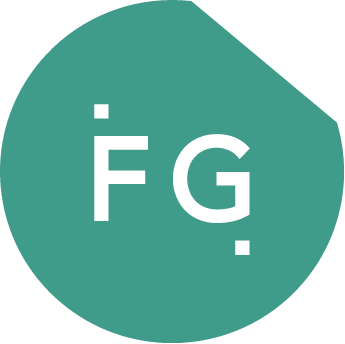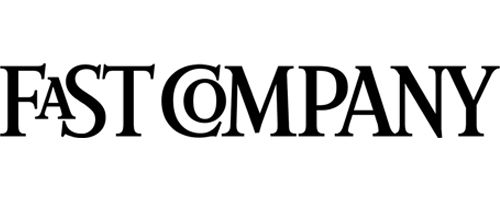Zoom happy hours? Check. Slack channels for #dogs and #sourdough? Check. Free meditation apps for everyone? Check. Businesses have thrown a lot of solutions at rising frustration, fatigue, and stress in the workplace. Is it working? The jury’s out. In June, the CDC reported that 40% of U.S. adults struggled with mental health and substance use issues associated with COVID-19.
Workplace stress came up strongly on a video call I hosted recently with members of World 50, a private community of business leaders who meet to discover ideas and build lasting relationships, and are partners in our Go Forward to Work research with Harvard. During group calls, we share best practices that leading organizations are adopting in a time of unprecedented volatility. On the topic of resilience, we burrowed into frustration and fatigue, from performance pressure and worries over balancing work and childcare, to racial injustice.
A thoughtful leader’s job is to identify the unique sources of stress in our organizations. With a clear set of actions, you can change the game for a lot of people, yielding winning and engaged mindsets.
First, discover where the stressors are. Survey platforms such as Qualtrics and Glint are a good way to do that. Alexion Pharmaceuticals went further and tapped 50 employees to act as “reflectors” and contact 20 or 30 more for feedback, quickly reaching almost 2,000 peers. “People felt their voice was heard and that made a huge impact on employee engagement, as well,” says Gianluca Pirozzi, head of clinical development and translational sciences at Alexion.
Here’s a list of five prominent workplace stressors and some practices to deal with them.
CHILDCARE FATIGUE
Willow, a manufacturer of a wearable silent breast pump, recently implemented no-meeting Wednesdays, and reduced the number and length of meetings by 20% across the board. “So far, it’s going really well,” says CEO Laura Chambers. With kids back in school (mostly), her operations team shifted meetings to afternoons and everyone can add out-of-office time. “Purple blocks,” says Chambers, “are a guilt-free time for people to use when they need to focus on school or go for a walk. And as leaders, we’re using it, celebrating it, and encouraging it.”
Mastercard came to the rescue of employees with school-age kids with a Summer Kids Club for 5- to 12-year-olds, coordinating activities such as cooking, dance, and STEM classes. More than a thousand kids signed up for three to four hours a day, giving parents a much-needed break. The human resources team even repackaged some employee training on topics like cryptology for kids. “Normally it would have taken months to get legal to sign off on something like that. But everyone just rallied and got it done,” says Michael Fraccaro, chief human resources officer at Mastercard.
RACIAL INJUSTICE AND POLITICAL STRESS
Racial injustice, protests, and divisive politics have led to further anxiety and unease, compounding the global health crisis and economic uncertainty. The news can feel overwhelming.
As leaders, we cannot undo wrongs that have been done, but neither can we continue to offer tacit approval in the form of silent, passive acceptance of the status quo. Many companies are encouraging open dialogue by hosting town halls to talk about race and diversity.
We at Ferrazzi Greenlight see this period as an opportunity for transformation and have issued a three-year challenge for top executive teams to take on this work directly and engage in the hard conversations we’ve ignored before. Together, we can use our positions of power to take a public stance against systemic racism.
We need to collaborate, both within our own organizations and across industry and country lines, to create genuinely diverse, equitable, and inclusive workplaces. This starts with an executive-level commitment to developing a strategic plan to promote diversity and racial equality. World 50 has launched an inclusion and diversity platform where top executives who lead diversity efforts can connect to share best practices and create significant, sustainable change. More than 200 executives representing Fortune 500 companies are already involved.
Bringing in different voices, skills, and experiences builds diversity and leads to better decision-making and a culture of inclusion. In the work we do with executive teams, we begin the diagnostic phase by asking: What are the distinct practices we can implement to dismantle the systemic racism that may exist in our organization?
PERFORMANCE PRESSURE EXHAUSTION
Delivering your numbers in the middle of the “pancession” is possible but not without some sleepless nights. Kristin Rand, vice president of corporate compliance and global risk officer at Moderna, described the added responsibility felt by the biotech’s employees working to develop a vaccine against the coronavirus. “On a daily basis, we give our all . . . my colleagues are constantly thinking about the needs of people around the world.”
Hundreds of new employees, including Rand, joined Moderna’s ranks over the past year. “Providing resources and opportunity for people to feel heard and alleviate stress—by encouraging open dialogue and time away—is paramount,” she says. Moderna’s CEO and leadership have discouraged Friday afternoon and weekend meetings and made a mindfulness and meditation app available to employees.
LACK OF HEALTHY ROUTINES
Working from home can slam structured workdays and regular time for exercise, leading some to turn the 30 or 40 minutes they might otherwise have spent commuting into healthy juice breaks, yoga stretches, or other physical activity.
Tim Patno, vice president of sales at WW Health Solutions, is providing mental wellness tools and healthy tips, such as turning meetings into “learning walks” to prospects. For some, that’s meant “taking contracting talks off the table,” but has allowed his teams to get closer to those considering wellness and nutrition programs—yielding deeper partnerships. “They’ve proactively remembered that we showed up in the right way as an organization and are now looking to 2021 . . . picking up the dialogues in a back-to-business way,” says Patno.
ISOLATION AND LONELINESS
A lot of companies are using group chat platforms such as Slack, Yammer, or Microsoft Teams to create communities for parenting and non-work pursuits. Great leaders do more than that to bring teams together. Pam Klyn, vice president, product and brands at Whirlpool, gathers employees across teams marking a service anniversary or birthday for a virtual “Ask Me Anything” session. “One might be in the lab, another working on dryers, and I think it might create some interesting connection points for people in shared circumstances,” she says.
Before COVID-19, Krystal Zell, the chief customer officer at Home Depot, would start meetings with people sharing their anxiety on a 1 to 10 scale. Everybody eventually settled at a norm, so if Phil was usually a five and came in at a seven or eight, the team knew to step up. “I loved this system,” says Zell, “because my direct [reports] started helping each other in ways you don’t normally see.”
Willow’s Chambers starts meetings with a personal prompt plucked from her school-age daughter: If you were a pair of shoes, what would you be and why? “It’s interesting,” she says. “People say things like, well, I feel like a pair of UGG boots because I’m kind of comfortable at home. Or I’m a pair of stilettos because I’m feeling really teetery right now. It’s a fun way to get the creative juices going, and I can’t tell you how appreciative people are of that 5 or 10 minutes a week. It’s blown me away how needed that was.”
Going forward, wellness will be a differentiating factor for companies, both from a talent perspective and societally as well—and a critical step to fostering a world that is healthier, more inclusive, and more resilient.






